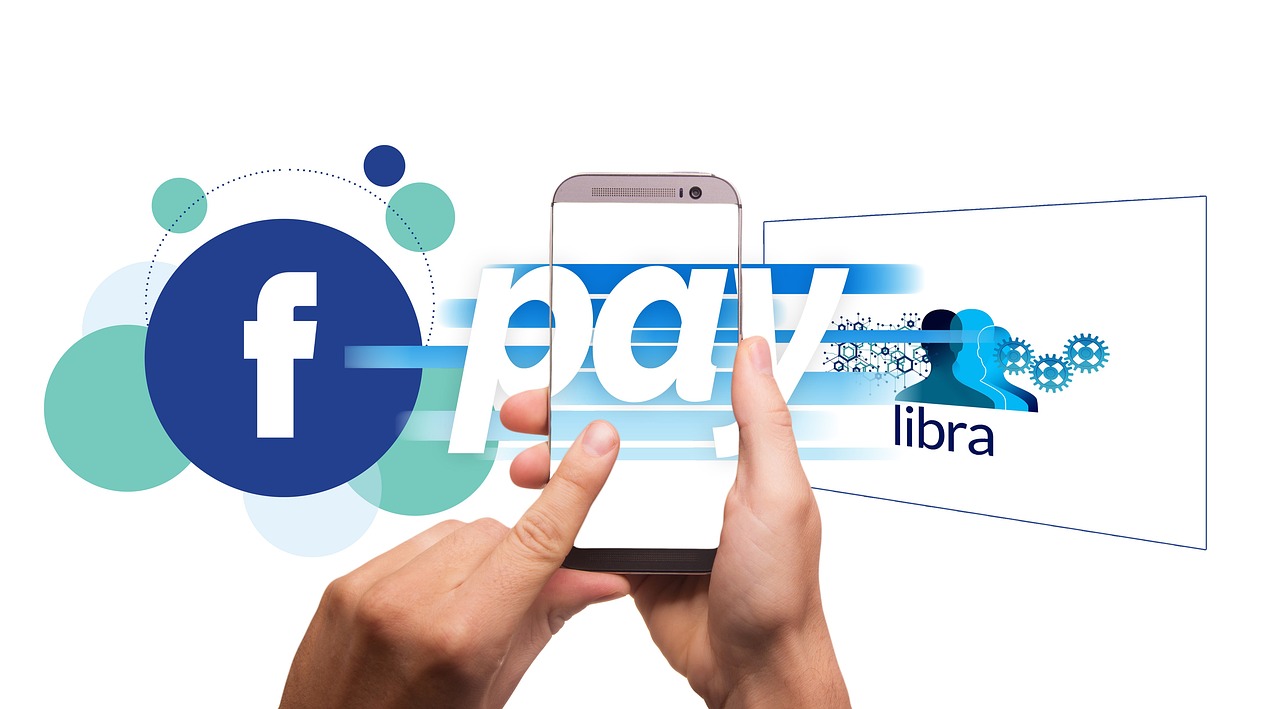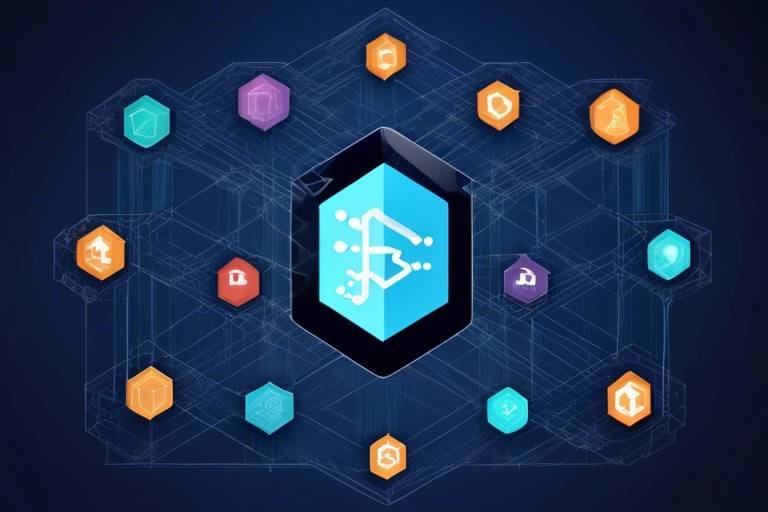Exploring the Use of Blockchain in Nonprofits
In recent years, the nonprofit sector has witnessed a remarkable transformation, largely driven by the advent of blockchain technology. This innovative technology is not just a buzzword; it’s a game-changer that enhances transparency, accountability, and efficiency in the way nonprofits operate and engage with their supporters. Imagine a world where every dollar donated is tracked with precision, where donors can see exactly how their contributions are being utilized. This is the promise that blockchain holds for nonprofits.
At its core, blockchain is a decentralized digital ledger that records transactions across multiple computers in such a way that the registered transactions cannot be altered retroactively. This means that once a transaction is recorded, it is permanently etched in digital stone. For nonprofits, this could mean a radical shift in how they manage funds, report on their activities, and interact with donors. The implications are profound: enhanced trust, reduced fraud, and increased donor engagement.
But how exactly does blockchain work in the nonprofit space? Nonprofits can leverage this technology to create immutable records of all transactions. This feature is crucial, as it ensures that all financial activities are transparent and verifiable. Imagine a donor being able to track their donation in real-time, seeing how their money is spent, and knowing that it is being used for its intended purpose. This level of transparency fosters a deeper sense of trust and connection between donors and organizations.
Moreover, blockchain technology provides a unique opportunity to streamline fundraising efforts. By utilizing secure payment methods and transparent donation tracking, nonprofits can enhance their fundraising strategies significantly. Donors are more likely to contribute when they feel assured that their funds are being handled responsibly. In this way, blockchain is not just a technical innovation; it is a bridge that connects nonprofits with their supporters in a more meaningful way.
As we delve deeper into this topic, we will explore the fundamental principles of blockchain, examine successful case studies of its implementation in nonprofits, and discuss the challenges organizations may face in adopting this technology. We will also look at future trends in blockchain usage within the nonprofit sector. So, buckle up as we embark on this exciting journey to understand how blockchain is shaping the future of nonprofits!
- What is blockchain technology?
Blockchain is a decentralized digital ledger that records transactions across multiple computers, ensuring that once recorded, the data cannot be altered or deleted.
- How can blockchain improve transparency in nonprofits?
By creating immutable records of transactions, blockchain allows donors to see exactly how their contributions are being used, fostering trust and accountability.
- What are the challenges of implementing blockchain in nonprofits?
Challenges include the need for technical expertise, potential resource allocation issues, and the necessity of educating stakeholders about the technology.
- Can blockchain enhance fundraising efforts?
Yes, blockchain provides secure payment methods and transparent donation tracking, making it easier for nonprofits to manage and report on fundraising activities.

The Basics of Blockchain Technology
Understanding the fundamental principles of blockchain technology is crucial for nonprofits looking to leverage its benefits. At its core, blockchain is a decentralized and distributed digital ledger that records transactions across multiple computers in a way that ensures the recorded information is secure, transparent, and immutable. This means that once data is entered into the blockchain, it cannot be altered or deleted, which is a game-changer for organizations that rely on trust and accountability.
To break it down further, blockchain operates through a series of interconnected blocks. Each block contains a list of transactions, and once a block is filled, it is linked to the previous block, forming a chain. This structure not only enhances security but also promotes transparency, as every participant in the network has access to the same information. Imagine a public library where everyone can see the same books and their borrowing history; this is akin to how blockchain functions.
Key components of blockchain technology include:
- Decentralization: Unlike traditional databases controlled by a single entity, blockchain is maintained by a network of computers (nodes), reducing the risk of data manipulation.
- Transparency: All transactions are visible to participants, fostering trust among stakeholders.
- Security: Advanced cryptographic techniques ensure that data is protected from unauthorized access.
- Immutability: Once data is recorded, it cannot be changed, which is vital for maintaining accurate records.
For nonprofits, these characteristics translate into enhanced operational efficiency and improved donor relations. By adopting blockchain technology, organizations can streamline their processes and ensure that every dollar donated is tracked and reported accurately. This not only boosts donor confidence but also encourages more contributions, as donors feel assured that their funds are being used effectively.
In summary, blockchain technology offers a transformative opportunity for nonprofits to enhance their operational capabilities. By understanding its basic principles, organizations can begin to explore the myriad ways in which they can implement this technology to foster greater transparency, accountability, and trust among their stakeholders.

Enhancing Transparency and Trust
In the nonprofit world, transparency and trust are the bedrock of successful relationships with donors and stakeholders. Imagine a scenario where donors can track exactly how their contributions are being utilized, from the moment the funds are received to the point where they are spent. This is where blockchain technology steps in, acting like a digital ledger that is open for all to see, yet secure from tampering. By leveraging blockchain, nonprofits can provide an unprecedented level of visibility into their operations, ensuring that every transaction is recorded in an immutable way.
One of the standout features of blockchain is its ability to create immutable records. This means that once a transaction is logged, it cannot be altered or deleted. For nonprofits, this is a game-changer. It fosters a culture of accountability, as stakeholders can verify that funds are being used appropriately. Imagine a donor who, after contributing to a specific project, can log into a platform and see not only that their money was received but also how it was allocated. This level of transparency can significantly enhance trust, making donors feel more secure in their contributions.
Let’s take a closer look at how immutable record keeping works. Each transaction on the blockchain is stored in a block, and once a block is filled, it is added to the chain in a linear, chronological order. This makes it nearly impossible to alter or erase any information without consensus from the network. For nonprofits, this means that they can confidently report on their financials and project outcomes, knowing that the data is secure and verifiable.
Several nonprofits are already reaping the benefits of blockchain technology. For instance, the WFP (World Food Programme) has implemented blockchain to distribute food assistance in a more efficient and transparent manner. By using blockchain, they can ensure that aid reaches the intended recipients without any diversion of funds. Another example is BitGive, which allows donors to track their contributions in real-time, providing updates on how funds are being utilized for various projects. These case studies demonstrate that the integration of blockchain not only enhances transparency but also builds trust with donors.
However, the road to blockchain adoption is not without its bumps. Nonprofits often face challenges such as a lack of technical expertise and limited resources. Implementing blockchain requires a certain level of understanding and infrastructure that not all organizations possess. Additionally, the initial costs associated with setting up blockchain systems can be daunting, especially for smaller nonprofits. Despite these challenges, the long-term benefits of enhanced transparency and trust can outweigh the initial hurdles.
In conclusion, blockchain technology holds the potential to revolutionize the way nonprofits operate, fostering a new era of transparency and trust. By creating immutable records and providing real-time tracking of funds, nonprofits can engage donors in a way that was previously unimaginable. As we continue to explore the capabilities of blockchain, it becomes increasingly clear that the future of nonprofit operations is not just about fundraising but about building lasting relationships based on trust.
- What is blockchain technology?
Blockchain is a decentralized digital ledger that records transactions across many computers in a way that the registered transactions cannot be altered retroactively.
- How does blockchain enhance transparency in nonprofits?
Blockchain allows for the creation of immutable records, enabling stakeholders to track donations and expenditures in real-time.
- What are some challenges nonprofits face when implementing blockchain?
Challenges include the need for technical expertise, resource allocation, and the initial costs of setting up blockchain systems.

Immutable Record Keeping
When it comes to the nonprofit sector, one of the most significant challenges is ensuring that all transactions and records are accurate, transparent, and trustworthy. This is where through blockchain technology shines. Imagine a digital ledger that not only records every transaction but also ensures that once data is entered, it cannot be altered or erased. This feature is akin to a diary that cannot be edited after the ink has dried; it preserves the integrity of every entry. In the world of nonprofits, this means that every donation, every expenditure, and every operational decision is permanently documented.
The beauty of blockchain lies in its decentralized nature, which means that no single entity has control over the entire system. Instead, the records are distributed across a network of computers, making it virtually impossible for any one individual or organization to manipulate the data. This aspect of blockchain fosters a sense of trust among stakeholders. Donors can rest assured that their contributions are being used as intended, and organizations can demonstrate their commitment to accountability.
In practical terms, immutable record keeping can transform how nonprofits report their financials. For instance, consider a nonprofit that receives a large donation for a specific project. With blockchain, the organization can create a unique transaction record for that donation, detailing how the funds are allocated and spent. This record is accessible to donors and stakeholders, allowing them to track the flow of money in real-time.
To illustrate this further, let's look at a hypothetical scenario:
| Transaction ID | Donor Name | Amount | Project | Date |
|---|---|---|---|---|
| 00123ABC | Jane Doe | $10,000 | Community Health Program | 2023-10-01 |
| 00124ABC | John Smith | $5,000 | Education Initiative | 2023-10-02 |
In this table, each transaction is recorded immutably. Once entered, this information cannot be changed, ensuring that both the donor and the nonprofit have a clear, unalterable record of the transaction. In a world where financial transparency is paramount, this level of accountability can be a game-changer.
However, it's important to note that while the benefits of immutable record keeping are clear, the transition to blockchain technology is not without its challenges. Nonprofits must consider factors such as the initial setup costs, the need for technical expertise, and the ongoing maintenance of the blockchain system. Nevertheless, the long-term benefits of enhanced transparency and trust can far outweigh these initial hurdles.
In conclusion, immutable record keeping through blockchain technology is not just a trend; it's a transformative approach that can redefine how nonprofits operate. By embracing this technology, organizations can build stronger relationships with their donors, enhance their credibility, and ultimately drive greater impact in their communities.

Case Studies of Successful Implementation
As the nonprofit sector continues to evolve, several organizations have taken the leap into the world of blockchain technology, showcasing its potential through successful implementations. One notable example is BitGive Foundation, which has pioneered the use of blockchain for charitable donations. By leveraging the Bitcoin blockchain, BitGive allows donors to see exactly how their funds are utilized in real-time. This transparency not only builds trust but also encourages more contributions as donors feel more connected to the impact of their generosity.
Another inspiring case is the UN World Food Programme (WFP), which has integrated blockchain technology to improve its cash-based transfer programs. The WFP's pilot project, known as "Building Blocks," utilizes blockchain to provide food assistance to refugees. By using a secure and transparent ledger, the WFP can track transactions efficiently, ensuring that aid reaches those in need without the risk of fraud. This innovative approach has not only streamlined operations but has also reduced costs significantly, allowing more resources to be directed towards helping vulnerable populations.
Furthermore, the Giveth platform exemplifies how blockchain can enhance donor engagement. Giveth is a decentralized donation platform that allows donors to track their contributions and see the direct impact on projects they support. Through the use of smart contracts, Giveth ensures that funds are allocated as promised, which fosters a sense of accountability and trust among contributors. This model not only attracts more donors but also strengthens the relationship between nonprofits and their supporters.
Lastly, the Charity: Water initiative has embraced blockchain for its fundraising efforts. By utilizing blockchain technology to verify and track donations, Charity: Water can provide donors with transparent reports on how their contributions are being spent. This level of transparency is crucial in a sector often marred by skepticism, as it assures donors that their money is making a tangible difference. The organization has reported increased donor retention and engagement since implementing blockchain, highlighting its effectiveness in building lasting relationships.
In summary, these case studies illustrate the transformative potential of blockchain technology in the nonprofit sector. By enhancing transparency, accountability, and engagement, organizations can not only improve their operations but also foster stronger connections with their donors. As more nonprofits begin to adopt blockchain solutions, we can expect to see a ripple effect of innovation and trust throughout the sector.
- What is blockchain technology?
Blockchain technology is a decentralized digital ledger that records transactions across many computers securely and transparently, making it nearly impossible to alter or delete any information.
- How can nonprofits benefit from blockchain?
Nonprofits can benefit from blockchain through enhanced transparency, improved donor trust, efficient fundraising, and streamlined operations, ultimately leading to more effective use of resources.
- Are there any challenges to implementing blockchain in nonprofits?
Yes, challenges include the need for technical expertise, potential resistance to change, and resource allocation for technology adoption.
- What is tokenization in the context of donations?
Tokenization refers to the process of converting a donation into a digital asset, allowing for greater engagement and incentivizing contributions through rewards.
- What are the future trends for blockchain in the nonprofit sector?
Future trends may include increased collaboration among nonprofits using blockchain, more sophisticated fundraising platforms, and the integration of artificial intelligence to analyze donor behavior.

Challenges in Implementation
While the potential of blockchain technology in the nonprofit sector is immense, the journey to implementation is not without its hurdles. One of the primary challenges is the technical expertise required to understand and integrate blockchain solutions effectively. Many nonprofits operate with limited resources and may not have the in-house skills necessary to navigate the complexities of blockchain technology. This lack of expertise can lead to hesitance in adopting new systems, as organizations might fear the unknown or worry about making costly mistakes.
Additionally, resource allocation poses a significant challenge. Nonprofits often work with tight budgets, and investing in new technology can seem daunting when there are pressing needs to address in their core operations. The cost of training staff, purchasing new software, and maintaining blockchain systems can add up quickly. Nonprofits must weigh the potential long-term benefits against the immediate financial strain, which can result in a reluctance to move forward.
Moreover, the regulatory landscape surrounding blockchain is still evolving. Different countries have varying laws governing cryptocurrency and blockchain technology, creating a patchwork of regulations that nonprofits must navigate. This uncertainty can discourage organizations from embracing blockchain solutions, as they may fear legal repercussions or compliance challenges. Understanding these regulations is crucial, yet it can be a daunting task for organizations focused on their primary mission.
Another challenge lies in data privacy. While blockchain is lauded for its transparency, nonprofits must also consider the implications of sharing sensitive information. Striking a balance between transparency and privacy is essential. Organizations need to ensure that they are not exposing themselves or their donors to unnecessary risks while still maintaining the trust that comes with transparent operations.
Finally, the adoption rate within the nonprofit community can be slow. Many organizations are traditionally conservative in their approach to technology, often sticking to tried-and-true methods. This reluctance can hinder the widespread acceptance of innovative solutions like blockchain, as nonprofits may prefer to wait for proven success stories before diving in themselves. The fear of change can be a significant barrier to entry, even when the potential benefits are clearly outlined.
In summary, while blockchain technology offers numerous advantages for nonprofits, the journey to implementation is fraught with challenges. From technical expertise and resource allocation to regulatory concerns and data privacy, nonprofits must navigate a complex landscape to harness the full potential of blockchain. However, with careful planning and a willingness to adapt, these organizations can overcome these hurdles and pave the way for a more transparent and efficient future.

Streamlining Fundraising Efforts
In the ever-evolving landscape of fundraising, blockchain technology offers a revolutionary approach that can significantly enhance the way nonprofits operate. Imagine a world where every donation is tracked in real-time, ensuring that every dollar reaches its intended purpose. This is not just a dream; it is a reality that blockchain can help create. By utilizing secure payment methods and transparent donation tracking, nonprofits can streamline their fundraising efforts like never before.
One of the most compelling features of blockchain is its ability to provide secure payment options for donors. Traditional payment methods often come with their share of risks, such as fraud and chargebacks. However, with blockchain, transactions are encrypted and secured, making it nearly impossible for unauthorized parties to tamper with them. This level of security not only protects the funds but also instills confidence in donors, encouraging them to contribute more generously.
Furthermore, blockchain allows nonprofits to create a transparent donation tracking system. Donors can see exactly how their contributions are being utilized, from the moment the donation is made to its final destination. This transparency fosters a sense of trust, as donors are no longer left in the dark about the impact of their support. For instance, if a donor contributes to a specific project, they can track the funds through every stage, ensuring that their money is being used effectively. Imagine being able to see the fruits of your generosity in real time; it's a game-changer!
To illustrate this concept, consider the following table that outlines the benefits of blockchain in fundraising:
| Feature | Benefit |
|---|---|
| Secure Transactions | Protects against fraud and unauthorized access |
| Real-Time Tracking | Allows donors to see the impact of their contributions |
| Lower Transaction Fees | Increases the amount of funds available for programs |
| Global Reach | Facilitates donations from anywhere in the world |
Moreover, blockchain technology can help nonprofits reduce transaction fees associated with traditional fundraising methods. By minimizing these costs, organizations can allocate more resources directly to their programs and initiatives, maximizing the impact of every dollar raised. This is particularly beneficial for smaller nonprofits that may struggle with high overhead costs.
As we look to the future, the potential for blockchain in fundraising is immense. Nonprofits that embrace this technology not only stand to gain a competitive edge but also enhance their overall mission. The integration of blockchain can transform fundraising from a cumbersome process into a streamlined, efficient system that benefits everyone involved. So, are you ready to take your fundraising efforts to the next level?

Building Stronger Donor Relationships
In today's fast-paced world, donors are not just looking to give; they want to feel connected to the cause they support. This is where blockchain technology steps in, offering a revolutionary way for nonprofits to build deeper, more meaningful relationships with their donors. Imagine being able to provide your supporters with real-time insights into how their contributions are making a difference. With blockchain, this is not just a dream—it's a reality!
By utilizing blockchain, nonprofits can offer unprecedented transparency regarding the impact of donations. Donors can track their contributions from the moment they are made until the funds are utilized for specific projects. This level of accountability fosters trust, as donors can see exactly how their money is being spent. Think of it as a financial GPS—no more guessing where the funds go; donors can see the entire journey!
Moreover, blockchain allows for the creation of digital wallets, where donors can easily manage their contributions. This not only simplifies the donation process but also enhances engagement. For instance, if a donor contributes to a specific project, they can receive updates directly to their digital wallet, showcasing the progress made. This creates a sense of ownership and involvement, making donors feel like they are part of something larger than themselves.
Another exciting aspect of blockchain is the concept of tokenization of donations. This means that nonprofits can create digital tokens representing different contributions. For example, a donor who contributes to a clean water initiative could receive a unique token that symbolizes their support. This token can be used to access exclusive content, updates, or even rewards, creating a gamified experience that encourages further contributions. It’s like turning philanthropy into a fun game!
To further enhance donor relationships, nonprofits can leverage blockchain to implement smart contracts. These are self-executing contracts with the terms of the agreement directly written into code. For donors, this means that their contributions will only be released when certain conditions are met, ensuring that funds are used as intended. This not only protects the donor's interests but also reinforces the nonprofit's commitment to accountability.
In conclusion, by embracing blockchain technology, nonprofits can transform their approach to donor relationships. The combination of transparency, engagement, and accountability creates a powerful foundation for trust. As the nonprofit sector continues to evolve, those who adapt and leverage these technologies will not only survive but thrive.
- How does blockchain improve transparency for donors?
Blockchain provides an immutable ledger that records all transactions, allowing donors to see how their funds are allocated and used. - What is tokenization in the context of donations?
Tokenization refers to creating digital tokens that represent a donor's contribution, enhancing engagement and providing unique incentives. - Can blockchain help with donor retention?
Yes! By offering transparency and engagement through blockchain, nonprofits can foster stronger relationships, leading to higher donor retention rates.

Tokenization of Donations
In the rapidly evolving landscape of nonprofit fundraising, emerges as a revolutionary concept that can reshape the way organizations engage with their supporters. But what exactly does tokenization mean? Simply put, it involves converting donations into digital tokens that represent a specific value or contribution. This process not only enhances the transparency of transactions but also creates a unique interaction between donors and the nonprofit organizations they support.
Imagine a world where every dollar you donate is tracked and represented as a digital token, allowing you to see exactly how your contribution is utilized. This is the promise of tokenization. By leveraging blockchain technology, nonprofits can create a system where each donation is recorded on an immutable ledger, ensuring that donors can follow their contributions from the moment they are made to the point of impact. This level of visibility fosters a sense of trust and connection that traditional donation methods often lack.
Moreover, tokenization can incentivize contributions in exciting ways. For example, nonprofits can offer special rewards or recognition to donors based on the tokens they hold. This could include exclusive access to events, personalized updates on projects funded by their donations, or even the ability to vote on how certain funds should be allocated. By transforming donations into a form of digital currency, organizations can create a more engaging and interactive experience for their supporters.
To illustrate the impact of tokenization, consider the following benefits:
- Enhanced Engagement: Donors feel more involved when they can track their contributions and see the direct impact.
- Increased Transparency: With a clear record of where funds are going, organizations can build stronger trust with their supporters.
- New Funding Opportunities: Tokenized donations can open doors to crowdfunding and innovative fundraising strategies.
As nonprofits explore the potential of tokenization, they must also consider the technological requirements and the need for a robust infrastructure. Implementing a tokenization strategy involves not only the technical aspects of creating and managing digital tokens but also educating donors about how this system works. By addressing these challenges head-on, nonprofits can harness the full power of tokenization, paving the way for a more transparent, engaging, and efficient fundraising landscape.
In conclusion, the tokenization of donations represents a significant leap forward for nonprofits. It encapsulates the essence of modern fundraising—transparency, engagement, and innovation. As organizations begin to adopt this approach, we can expect to see a shift in how donations are perceived and managed, ultimately leading to a stronger bond between nonprofits and their supporters.
- What is tokenization in the context of donations?
Tokenization refers to the process of converting donations into digital tokens that represent a specific value, allowing for transparent tracking and engagement. - How does tokenization enhance donor trust?
By providing a transparent record of how donations are used, tokenization fosters trust and accountability between donors and nonprofits. - What are the potential challenges of implementing tokenization?
Challenges may include the need for technical expertise, educating donors about the system, and establishing a secure infrastructure.

Future Trends in Nonprofit Blockchain Usage
As we look ahead, the intersection of blockchain technology and the nonprofit sector is poised for remarkable evolution. The potential of blockchain to transform how nonprofits operate is not just a fleeting trend; it’s a fundamental shift that promises to redefine engagement, transparency, and efficiency. So, what can we expect in the coming years?
One of the most exciting prospects is the rise of decentralized finance (DeFi) solutions tailored for nonprofits. Imagine a world where nonprofits can access funding without traditional banking barriers. With DeFi, organizations can raise funds through decentralized platforms, allowing for lower fees and faster transactions. This could open the door for smaller nonprofits to thrive, leveling the playing field in fundraising.
Moreover, the concept of smart contracts is likely to gain traction. These self-executing contracts with the terms of the agreement directly written into code can automate various processes, from donation distribution to project funding. For instance, a smart contract could automatically release funds to a project once specific milestones are achieved, ensuring that money is spent wisely and efficiently. This not only enhances accountability but also builds trust with donors.
Another trend to watch is the growing emphasis on impact measurement. Nonprofits are increasingly being held accountable for the outcomes of their initiatives. Blockchain can facilitate this by providing transparent tracking of how funds are utilized and what impact they generate. By integrating impact measurement tools within blockchain systems, nonprofits can provide real-time data to stakeholders, showcasing the effectiveness of their programs.
Additionally, the concept of digital identity is set to revolutionize how nonprofits interact with beneficiaries and donors alike. By leveraging blockchain, organizations can create secure digital identities for individuals, ensuring that aid reaches the right people. This could significantly reduce fraud and misallocation of resources, making every dollar count.
Furthermore, we may see an increase in collaborative platforms that utilize blockchain to connect various nonprofits, allowing them to share resources, knowledge, and best practices. Imagine a blockchain network where organizations can collaborate on projects, share data securely, and enhance their collective impact. This kind of synergy could lead to innovative solutions to pressing social issues.
Lastly, as the technology matures, we can expect more user-friendly applications that demystify blockchain for nonprofits. The initial complexity of blockchain can be a barrier, but as developers create more intuitive interfaces, nonprofits will be better equipped to harness its benefits without needing extensive technical expertise.
In conclusion, the future of blockchain in the nonprofit sector is bright and full of possibilities. As organizations embrace these trends, they can enhance their operational efficiency, improve donor relations, and ultimately make a more significant impact in their communities. The journey is just beginning, and it’s an exciting time to be involved in the nonprofit landscape!
- What is blockchain technology? Blockchain is a decentralized digital ledger that records transactions across many computers in a way that the registered transactions cannot be altered retroactively.
- How can nonprofits benefit from blockchain? Nonprofits can enhance transparency, improve fundraising efforts, and build stronger relationships with donors through blockchain technology.
- What are smart contracts? Smart contracts are self-executing contracts with the terms of the agreement directly written into code, enabling automated processes.
- Can blockchain reduce fraud in nonprofits? Yes, by providing transparent records and secure digital identities, blockchain can significantly reduce fraud and misallocation of resources.
Frequently Asked Questions
- What is blockchain technology?
Blockchain technology is a decentralized digital ledger that records transactions across multiple computers securely. This means that once a transaction is recorded, it cannot be altered or deleted, ensuring data integrity and transparency.
- How can blockchain enhance transparency in nonprofits?
Blockchain enhances transparency by providing immutable records of all transactions. This allows donors and stakeholders to verify how funds are being used, fostering trust and accountability within the organization.
- What are immutable records, and why are they important?
Immutable records are entries in a blockchain that cannot be changed or deleted. They are crucial for nonprofits as they ensure that all financial transactions are permanently documented, which helps maintain accountability and prevents fraud.
- Can you provide examples of nonprofits using blockchain?
Yes! Several nonprofits have successfully implemented blockchain for various purposes. For instance, some organizations use it for tracking donations and ensuring that funds reach their intended projects, while others utilize it for transparent reporting to stakeholders.
- What challenges do nonprofits face when implementing blockchain?
Nonprofits may encounter several challenges when adopting blockchain technology, such as a lack of technical expertise, the need for significant resource allocation, and potential resistance to change within the organization.
- How does blockchain streamline fundraising efforts?
Blockchain streamlines fundraising by providing secure payment methods and transparent donation tracking. This allows donors to see exactly where their contributions are going and how they are being utilized, which can increase donor confidence and engagement.
- What is tokenization of donations?
Tokenization of donations refers to the process of creating digital assets that represent contributions. This can enhance donor engagement by allowing supporters to track their impact in real-time and even receive incentives for their contributions.
- What future trends can we expect in nonprofit blockchain usage?
As technology evolves, we can expect to see more nonprofits adopting blockchain for various applications, such as enhanced donor engagement, improved transparency, and innovative fundraising strategies. Trends may also include the integration of smart contracts and increased collaboration between organizations.



















